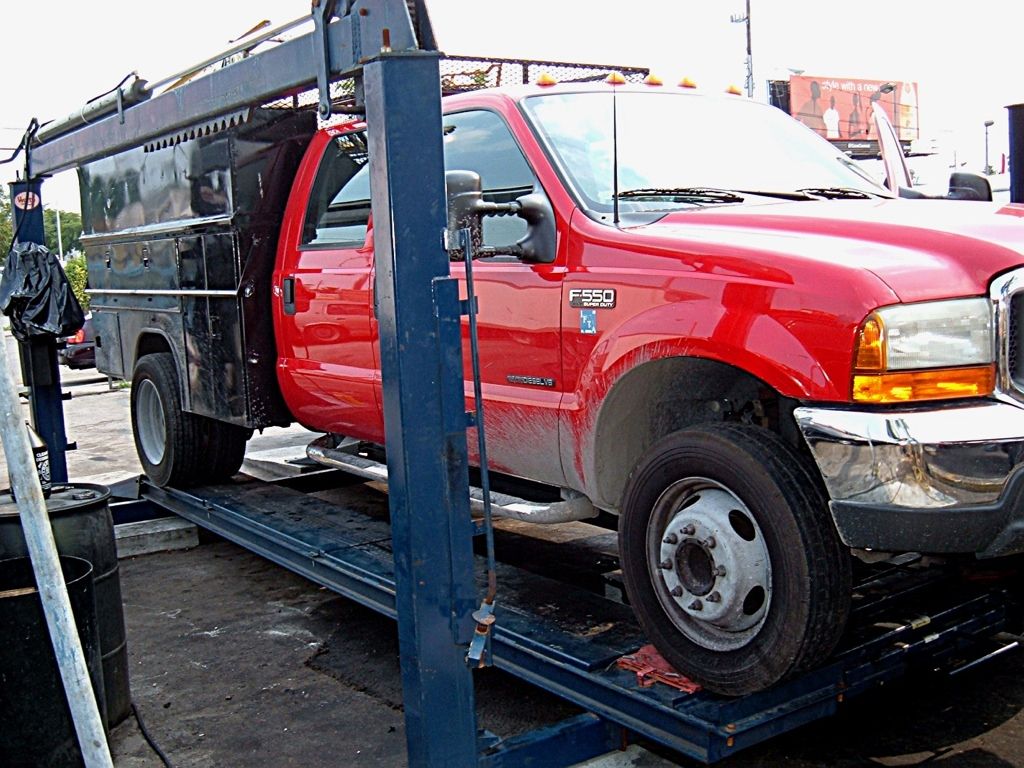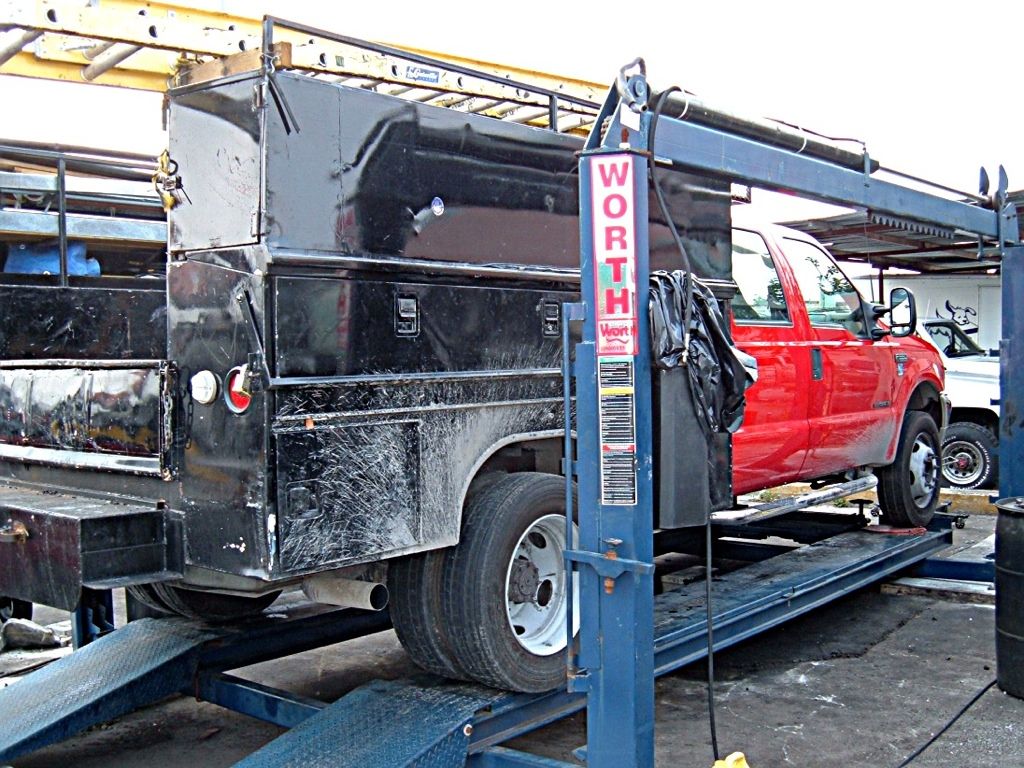Sandaholic
Bangin' through the gears
I'm going to be repairing/modifying a beam on a four post lift. This lift is used to do alignments and has been replaced once already to factory spec. It has since drooped again in the middle which screws with the alignment equipment. It is a 10' span of 5"x3"x.25"wall rectangular tube. The drive on platform/ramps are 5'6" apart and 1'10" wide each. I was asked if I could replace it with a .375 or .5" wall tube.
My question is how much more strength will either of these be over the .25" tube? IIRC the heaviest rigs they put on the rack are 15k. And the .25 tube lasted for years, but over time it has sagged to the point where it needs to be fixed again.
I have another idea to fix this thing which IMO will be way less involved. The other plan is to cut the beam up the center leaving the top intact. Bring it back to level or just a hair high. Weld it back together and then full length plate it on both sides with .25" or even .5". Or plate it all the way around if that will really increase the strength. Extra weight will not bother this thing at all. The ramps are already a little too steep for some cars so going to a deeper beam like a 5"x8" is kinda out of the question.
I have the go ahead to do it either way.
My question is how much more strength will either of these be over the .25" tube? IIRC the heaviest rigs they put on the rack are 15k. And the .25 tube lasted for years, but over time it has sagged to the point where it needs to be fixed again.
I have another idea to fix this thing which IMO will be way less involved. The other plan is to cut the beam up the center leaving the top intact. Bring it back to level or just a hair high. Weld it back together and then full length plate it on both sides with .25" or even .5". Or plate it all the way around if that will really increase the strength. Extra weight will not bother this thing at all. The ramps are already a little too steep for some cars so going to a deeper beam like a 5"x8" is kinda out of the question.
I have the go ahead to do it either way.


